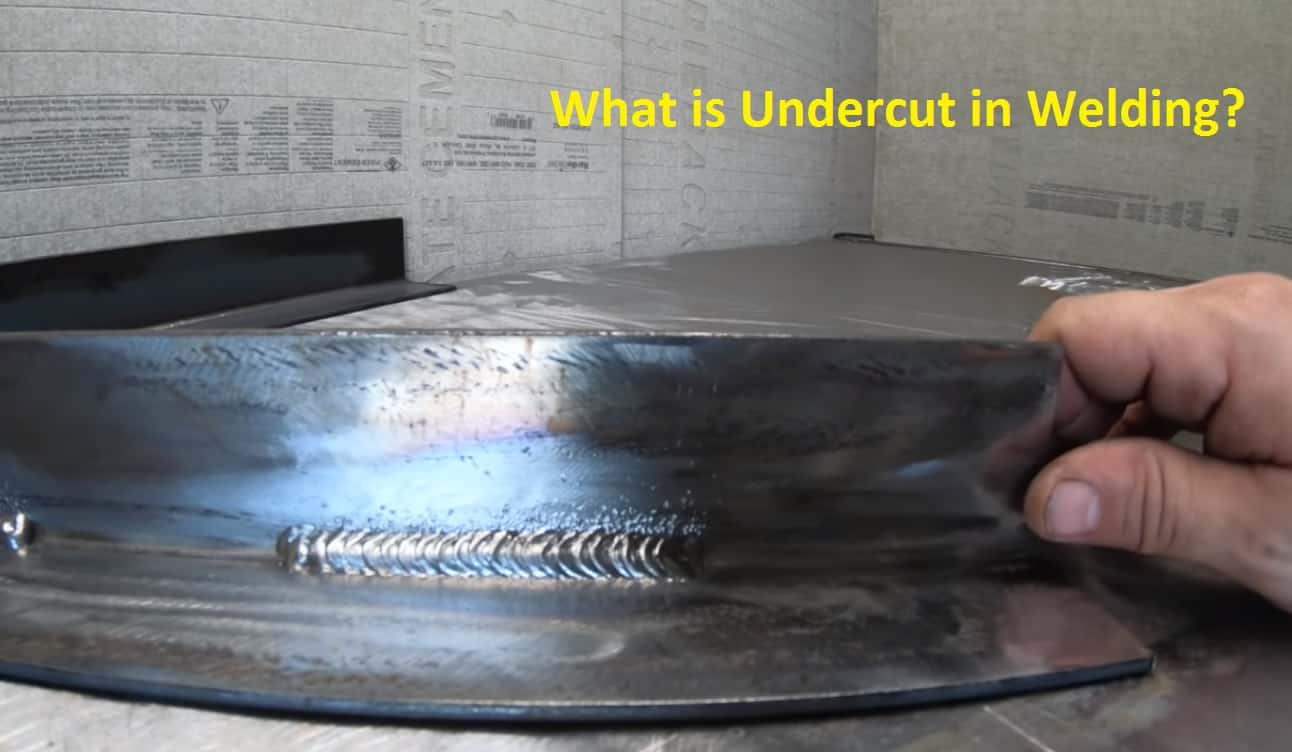Welding associates many imperfections that should be known along with the solutions to fix them. There are a lot of technical terms that are used to describe the various defaults in welding, and one of the most common welding defects is undercutting.
Do you have an idea what is undercut in welding? If not, then you shouldn’t feel discouraged as we have compiled the most authentic information for you in this instructable guide.
Undercuts in welding are hard to detect because it requires a skilful eye to set on a particular angle to inspect. So you should be highly professional in this regard.
Moreover, several factors contribute to producing this defect. But this is also true that you can prevent the weld from its drastic effects. So go ahead without further delays and fix this issue by reading the article!
What is Meant by Undercutting in Welding?
There are several kinds of defects in welding that vary in their size, shape, and application, but the default, which is mostly faced by welders and has deep technical roots, is undercutting in welding.
This imperfection physically looks like a groove to the weld interface.
This depression ultimately reduces the weld strength that is likely to build a crack in the weld root and ultimately interrupts the process of welding with this defect, and a welding project can’t be considered with such a default. So its fixing is necessary!
This crucial issue occurs accidentally to most welders, and it doesn’t relate to the welder’s skill level. This problem is dangerous to the welding assignment as it reduces productivity.
Undercutting makes a groove when there is a high speed of the welding arc; depending on this speed, the size and the shape of the depression in the weld toe are decided.
What are the Top Reasons for Undercut in Welding?
When we talk about the causes of undercut in welding, then we come across plenty of factors that seem to be the possible reasons why these defects occur to the weld interface.
Here, we are going to present you the top causes of undercut in welding. Scroll to read!
1. Incorrect Welding Technique
The welding technique is the most important reason for creating the depression in the weld interface. The welding technique basically decides the future of the welding project. So appropriately proceeding with welding is crucial.
Holding the electron gun or the electrode in an incorrect direction may cause the burning of the plate edge. Moreover, if you move the electrode faster than normal speed, then it may also create a defect as it doesn’t allow the molten weld to properly fill the weld bead.
Moreover, if the welder is creating inappropriate weaving or zig-zag movements on the weld surface, then this also alters the shape and produces weld cracks.
2. Incorrect Fit-Up
The welding is all about fitting the two pieces of weld together. The join should be strong; otherwise, the welding is failed. So a welder should give proper attention to the alignment of the joining metal pieces.
The mismatch at the weld edges is the main reason for undercuts in welding.
3. High Current Intensity
Undercutting in welding compromises the quality of the weld and also remarkably decreases productivity; that’s why it must be treated. But sometimes, the welders are unaware of the use of appropriate amounts of current and voltage.
The intensity should be according to the prescribed amount; otherwise, the groove will appear.
4. Rusty Base Metal
The base metal has a major role in deciding the weld quality. If the metal is contaminated or corroded, then it is highly recommended not to use it in welding.
If, in case, a welder comprises the base metal, then after effects are serious because it ultimately reduces the strength and also alters the metal interface appearance.
5. Damp Electrodes
Last but not the least, the electrodes you are using in the welding process for melting the base metal shouldn’t be damp. This is the main cause of why grooves occur in the welds.
What are the Tips to Avoid Undercut in Welding?
Every problem has a solution. Similar is the case with undercutting. This problem can also be avoided with the help of some professional tips.
Here is a quick overview of the tips for you!
What is Meant by Internal Undercutting?
In the above-mentioned information, the undercut is generally discussed, but here is a main term that should be understood, and this is internal undercutting.
Internal undercutting is also known as root welding, as it occurs near the base metal adjacent to the root of the weld; that can be avoided with the assistance of weld beads by placing them in the weld area.
Wrap Up
The depressions and grooves in the weld interface are known as undercuts. These undercuts are the main cause of the excessive spread of heat. This heat, along with numerous other factors, creates undercuts that are serious welding defaults. Doesn’t matter if these undercuts are internal or external; they should be fixed to get a quality weld.
Hopefully, you have proper knowledge about what is undercut in welding, and now you can efficiently deal with this issue in the future with the help of this article!
